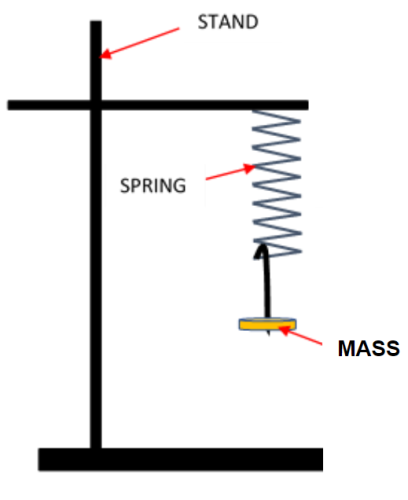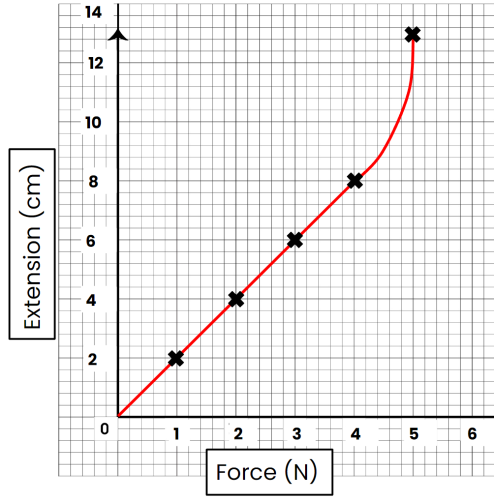Imagine that you were working in a company designing bungee cords for bungee jumpers. How would you figure out which materials to use, or what the maximum safe force on that cord could be?

We use experiments and investigations to solve problems like this. In this activity, we will consider a simple investigation into the relationship between forces and the stretching of a material. We will look at a material that follows Hooke's Law.
Hooke's Law states that for some materials, the stretching force applied to the object is directly proportional to the extension of the object. In other words, if you double the force acting on a material, its extension will also double.
Not all materials follow Hooke's Law. Even for materials that do, like springs, there is one important exception.
If you stretch a material beyond its elastic limit, by applying too much force, the force won't be proportional to the extension any more and the material won't return to its original shape.
In our experiment, we will hang a spring from a clamp stand.
We will hang slotted masses on the end of the spring - these masses provide the stretching force on the spring. We can add masses to increase the stretching force.
The stretching force is the independent variable.
We will need to measure the extension of the spring. The easiest way to do this is to measure the original length of the spring, measure the new stretched length, and subtract them to find the difference.
For example, if the spring has an original length of 3 cm, and a new length of 10 cm, the extension is 7 cm.
The extension is the dependent variable.
What are some sensible safety precautions for this experiment?

Wearing safety goggles is important in experiments like this. The hazard is the stretched spring with the masses on the end. A hazard is something that can cause harm - in this case, the spring could snap under tension, and some or all of that spring could fly up and hit someone. This could cause damage.
The risk of this happening is low, but if it did happen it could be quite serious. That's why safety goggles are important.
Here are some results from the experiment.
| Force (N) | Original Length (cm) | New Length (cm) |
Extension (cm) |
|---|---|---|---|
| 0 | 2 | 2 | 0 |
| 1 | 2 | 4 | 2 |
| 2 | 2 | 6 | 4 |
| 3 | 2 | 8 | 6 |
| 4 | 2 | 10 | 8 |
| 5 | 2 | 15 | 13 |
These results can be plotted in a graph, to show the relationship between force and extension.
Between 0 Newtons and 4 Newtons, there was a directly proportional relationship between the force and the extension. For example, when the force was 1 Newton the extension was 2 cm. If we triple the force to 3 Newtons, the extension also triples to 6 Newtons.
The line of best fit is straight, and it goes through the origin (0,0). This is another indicator of a directly proportional relationship.
What do you think happened at 5 Newtons?
The likely explanation is that the spring went past its elastic limit. It is over-stretched and will not return to its original shape.
Now let's look at some practice questions!









